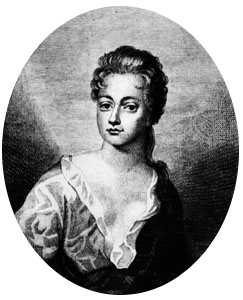Related Research Articles

Anne Bracegirdle was an English actress.

Robert Wilks was a British actor and theatrical manager who was one of the leading managers of Theatre Royal, Drury Lane in its heyday of the 1710s. He was, with Colley Cibber and Thomas Doggett, one of the "triumvirate" of actor-managers that was denounced by Alexander Pope and caricatured by William Hogarth as leaders of the decline in theatrical standards and degradation of the stage's literary tradition.
Thomas Elrington (1688–1732), was an English actor.
Theophilus Keene (1680–1718) was an Anglo-Irish stage actor and theatre manager.
Jane Rogers was a British stage actress.
John Mills (c.1670–1736) was a British stage actor. A long-standing part of the Drury Lane company from 1695 until his death, he appeared in both comedies and tragedies. His wife Margaret Mills was an actress, and his son William Mills also became an actor at Drury Lane.
John Bowman (1651–1739) was a British stage actor. He began his career in the Duke's Company at the Dorset Garden Theatre. In 1692, he married Elizabeth Watson, who acted under the name Elizabeth Bowman. He later switched to act at the Drury Lane Theatre. He is also referred to as John Boman.
William Bowen (1666–1718) was a British stage actor. He was part of the United Company from 1689. For a time, he became known for his comic roles. He was fatally wounded in a duel with fellow actor James Quin in 1718.
Thomas Simpson was an English stage actor of the late seventeenth and early eighteenth century. His surname is sometimes written as Sympson.
Mary Powell was an English stage actor of the seventeenth century and early eighteenth century.
Jane Rogers was an English stage actress. To distinguish her from her daughter she is sometimes referred to as Jane Rogers the Elder.
John Corey was an English stage actor and playwright of the eighteenth century. His name is sometime written as John Cory.
Elizabeth Willis (c.1669-1739) was a British stage actress.
Mary Willis was a British stage actress of the eighteenth century.
John Thurmond was a British stage actor. To distinguish him from his son, also an actor named John, he is sometimes called John Thurmond the Elder.
George Pack was a British stage actor, singer and theatre manager of the eighteenth century. His first known performance on the London stage was as Westmoreland in Shakespeare's Henry IV at the Lincoln's Inn Fields Theatre and he remained with the company until it transferred to the Queens's Theatre in the Haymarket in 1705. He played in a mixture of comedies and tragedies, originating roles in plays by many of the leading dramatists of the era including Nicholas Rowe, Mary Pix, John Vanbrugh and Susanna Centlivre.
Abigail Lawson was an English stage actor of the seventeenth and early eighteenth century. She was a member of the United Company, making her first known appearance in The Marriage-Hater Matched by Thomas D'Urfey in 1692. From 1695 she was part of Thomas Betterton's breakaway company at the Lincoln's Inn Fields Theatre.
Joseph Harris (c.1650–1715) was an English stage actor and playwright. His earliest known performance was in the United Company's The Bloody Brother in 1685. Earlier mentions an actor named Harris are likely to refer to an earlier lesser-known actor William Harris or even the celebrated Restoration performer Henry Harris. He remained with the United Company until 1695 when he joined Thomas Betterton's breakaway company at the Lincoln's Inn Fields Theatre. He acted there until around 1705, although some reports have him still acting as late as 1715.

Henry Harris was an English stage actor and theatre manager. Initially a painter he was a founder member of the new Duke's Company in 1660 following the Restoration which established itself at the old Salisbury Court Theatre before moving to the new Lincoln's Inn Fields Theatre shortly afterwards. Due to his background Harris may have been a set designer and painter during his early years with the company. However, by 1661 he was acting, and his first recorded role was in William Davenant's The Siege of Rhodes that summer. He quickly established himself as the second actor in the troupe after Thomas Betterton.
Howard Usher was an English stage actor of the eighteenth century. He had a lengthy career in London's West End beginning at Drury Lane during the 1739–1740 season. A member of the company, he played smaller, supporting roles in a large number of productions. He also acted at the London fairs during the summer and at Richmond in Surrey and the Jacobs Well Theatre in Bristol. In 1750 he moved to Covent Garden for four years, before returning to Drury Lane for a further four years in 1758. He then moved to Ireland where he spent a number of years at the Smock Alley Theatre and Crow Street Theatre in Dublin and also appeared at the Theatre Royal, Cork. By this time he was married to the actress Maria Usher who appeared with him in Dublin. In 1774 he was recruited by David Garrick to return to Drury Lane. In 1778 he joined the company at the Theatre Royal, Haymarket and remained part of it for the next twenty one years. His final appearance was a reprise of his original role Sir Walter Manny in George Colman the Younger's The Surrender of Calais on 10 September 1799.